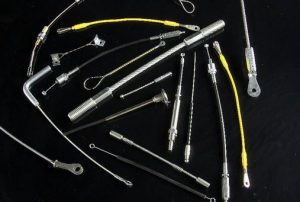 How to select the right wire rope, according to Bergen
How to select the right wire rope, according to Bergen
November 13, 2018 REDWIRE is news you can use from leading suppliers. Powered by FRASERS.
Posted by Bergen Cable Technology, Inc
Mfr Mechanical Cable, Cable Assemblies & Push-Pull Controls. Original Mfr Of Safety Cable, A Patented Fastener Reten... Read more
Subscribe
Free REDWIRE e-newsletter

Bergen Cable advises businesses to consider four main requirements when selecting wire rope.
Bergen Cable is one of North America’s top suppliers of high-end cable, but it is also a major source of wire rope. This is similar to cable, except that it generally has a diameter exceeding 3/8 of an inch. As a team of seasoned experts in wire rope, Bergen Cable offers top advice to customers on getting the most out of wire-rope products – including careful selection.
Strength, safety, fatigue, and wear
Bergen Cable recommends that businesses consider four main factors when selecting wire rope. A customer should evaluate the relative importance of these requirements and choose a rope with the traits best suited to last through continuous use.
These four factors are as follows:
- Strength. Users tend to subject wire rope to direct tension, acceleration, sudden or shock loads, bending, several forces at once, and other types of stresses. By choosing a rope of the right strength – determined by size, grade, and construction – workers can minimize the effects of these stresses.
- Safety. Companies should determine the rope’s safety factor, which is the ratio of the weight the rope can hold to the weight of the total working load. The proper safety factor also depends on the speed of operation, shock load, the fittings used to secure the rope ends, rope length, the number and sizes of sheaves and drums and their locations, causes of abrasion and corrosion, and more.
- Fatigue. The propagation of small cracks under repeated applications of bending loads causes fatigue failure in wires. This happens when the rope operates over relatively small sheaves or drums; repeated bending and straightening of individual wires leads to fatigue. Users can prevent early fatigue by using sheaves and drums of adequate size and using a rope with high flexibility.
- Abrasive wear. Size, carbon and manganese content, heat treatment of outer wires, and construction determine how well wire rope resists abrasion. Larger outer wires of less flexible constructions can better withstand abrasion than can finer outer wires of more flexible rope, while high carbon and manganese strengthen the rope.
To learn more, contact Bergen Cable.
Share
Posted by Bergen Cable Technology, Inc
Mfr Mechanical Cable, Cable Assemblies & Push-Pull Controls. Original Mfr Of Safety Cable, A Patented Fastener Reten... Read more
